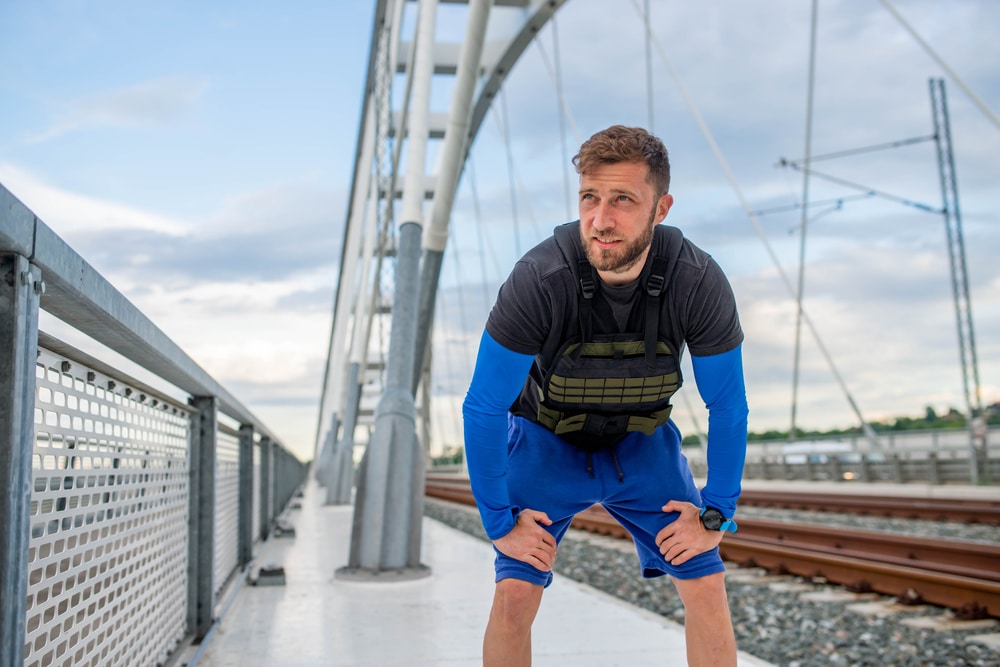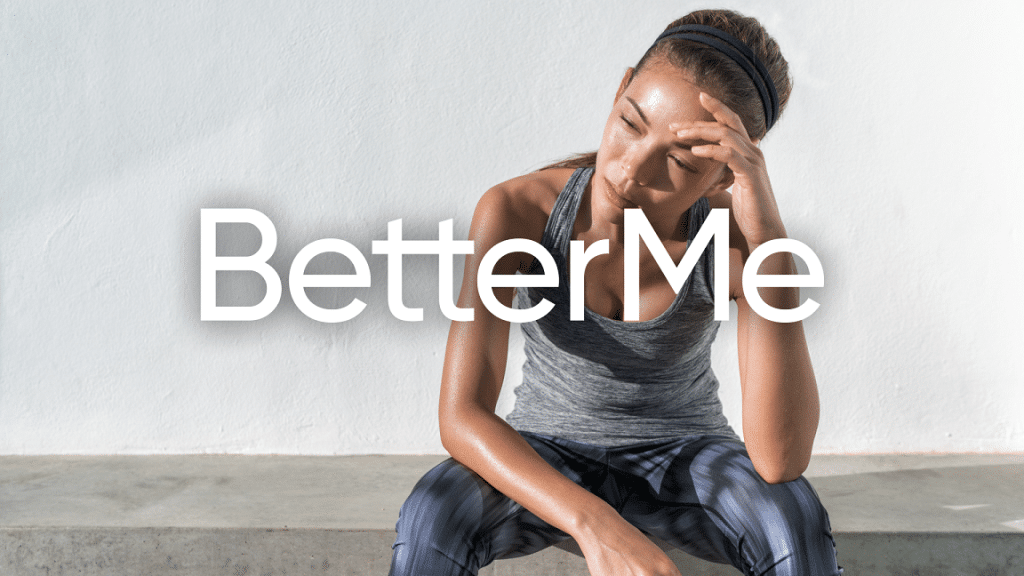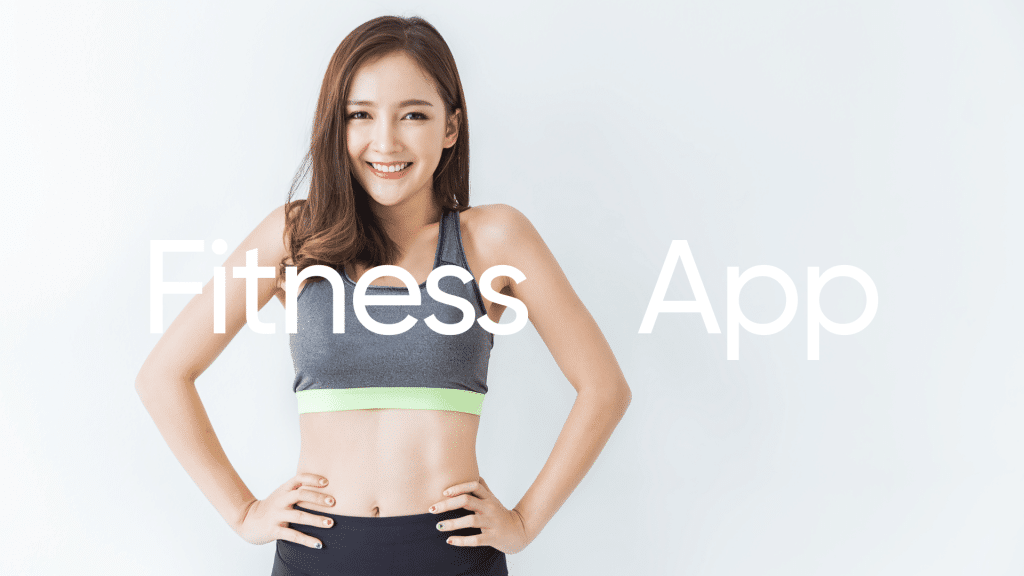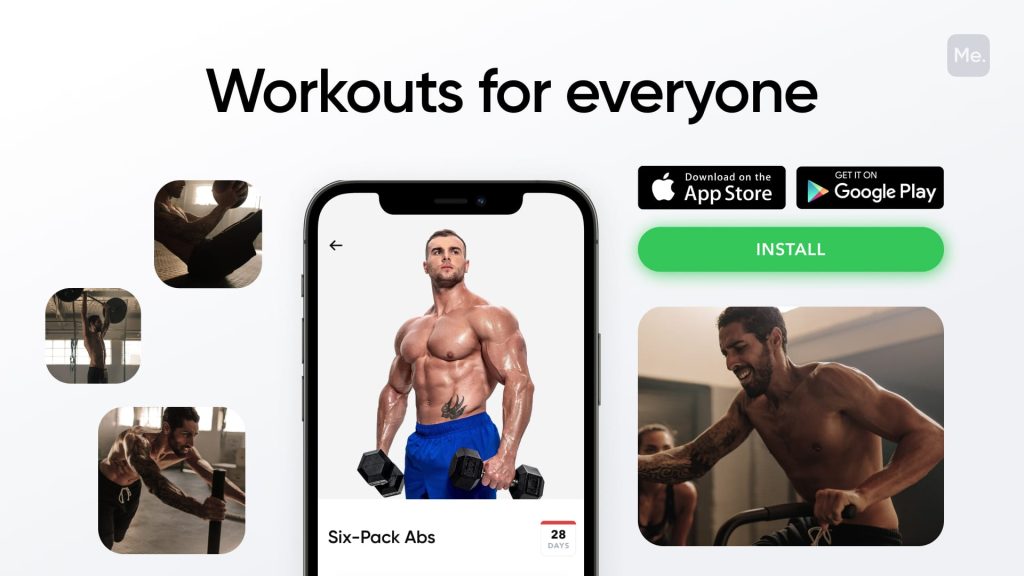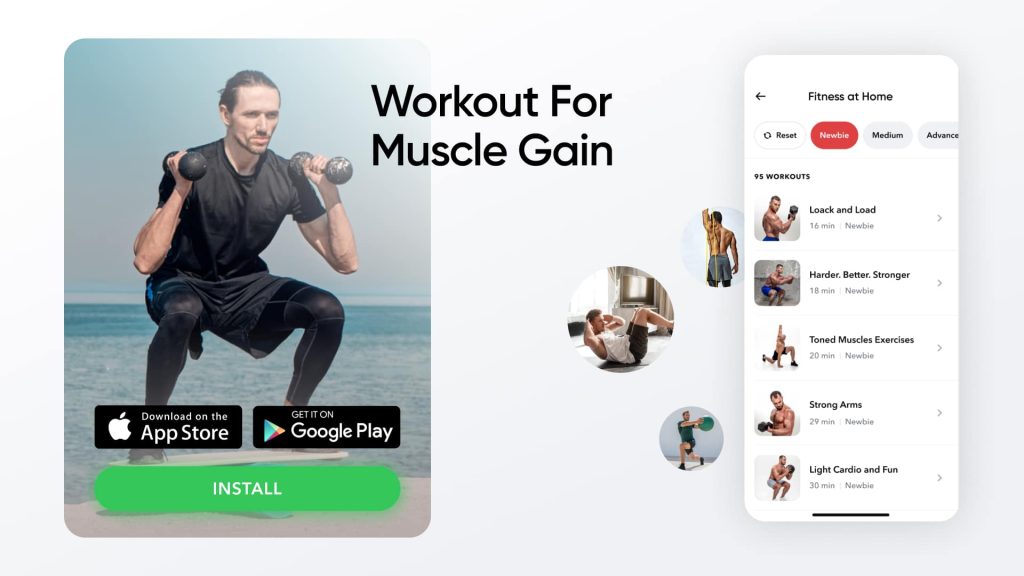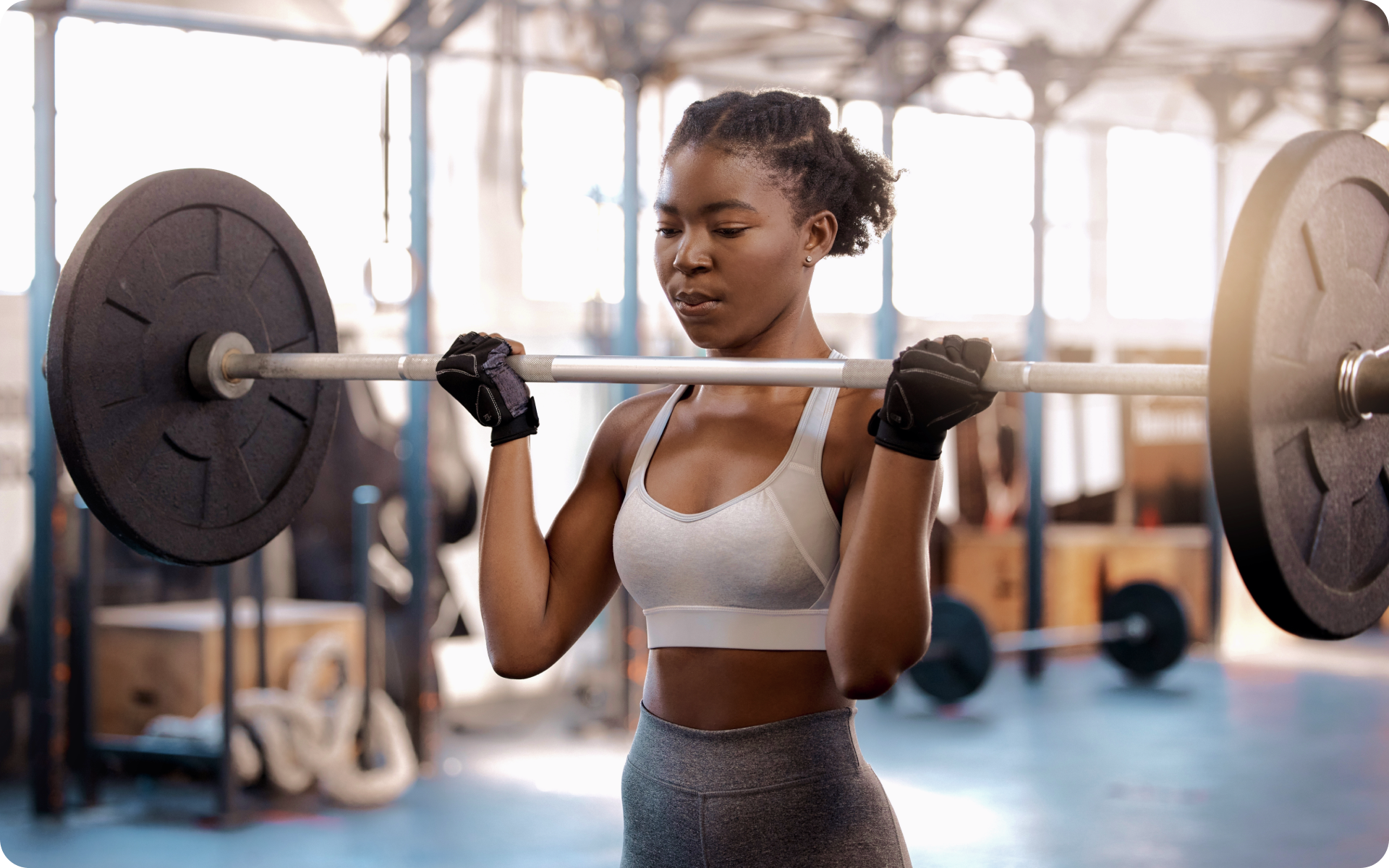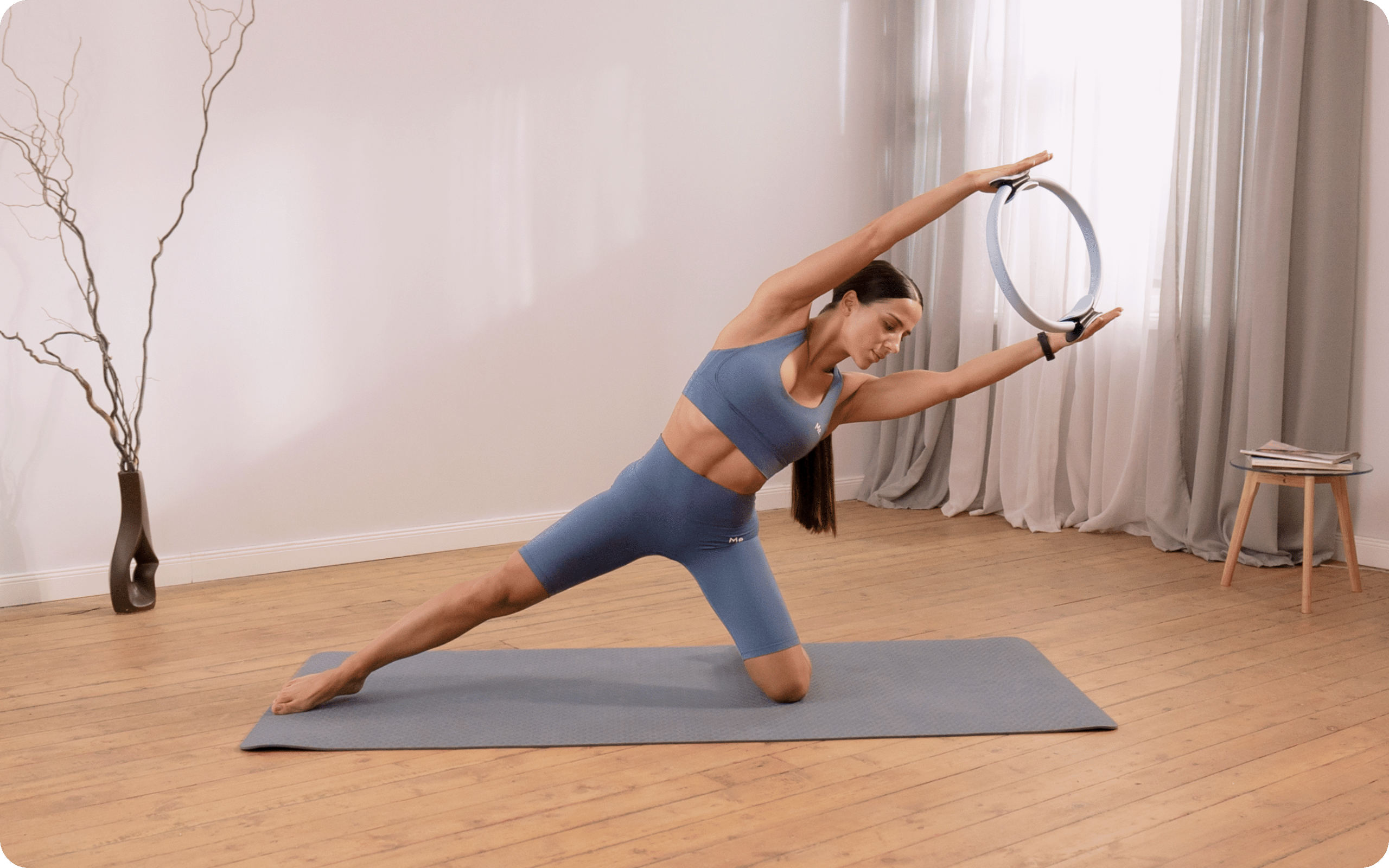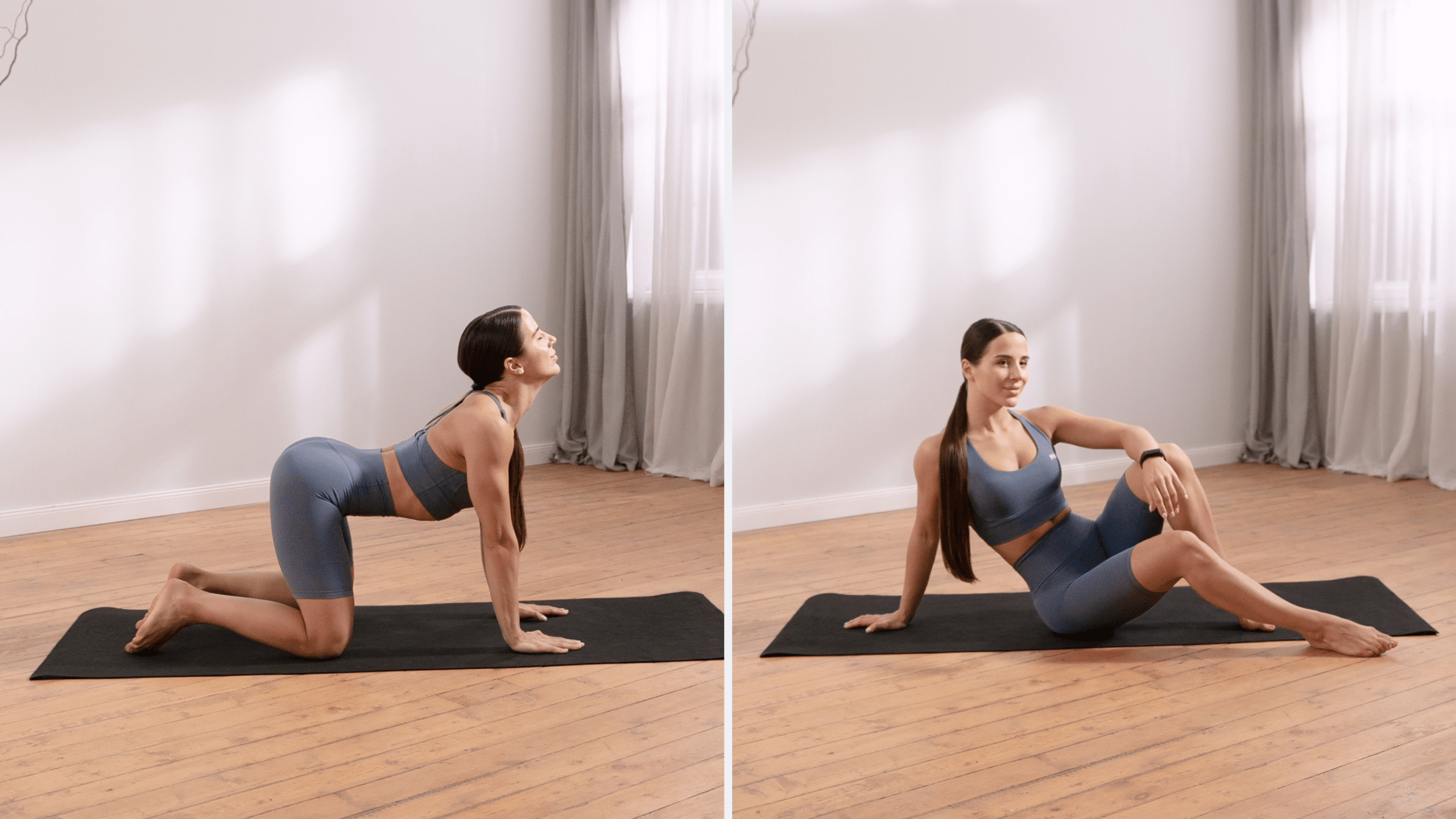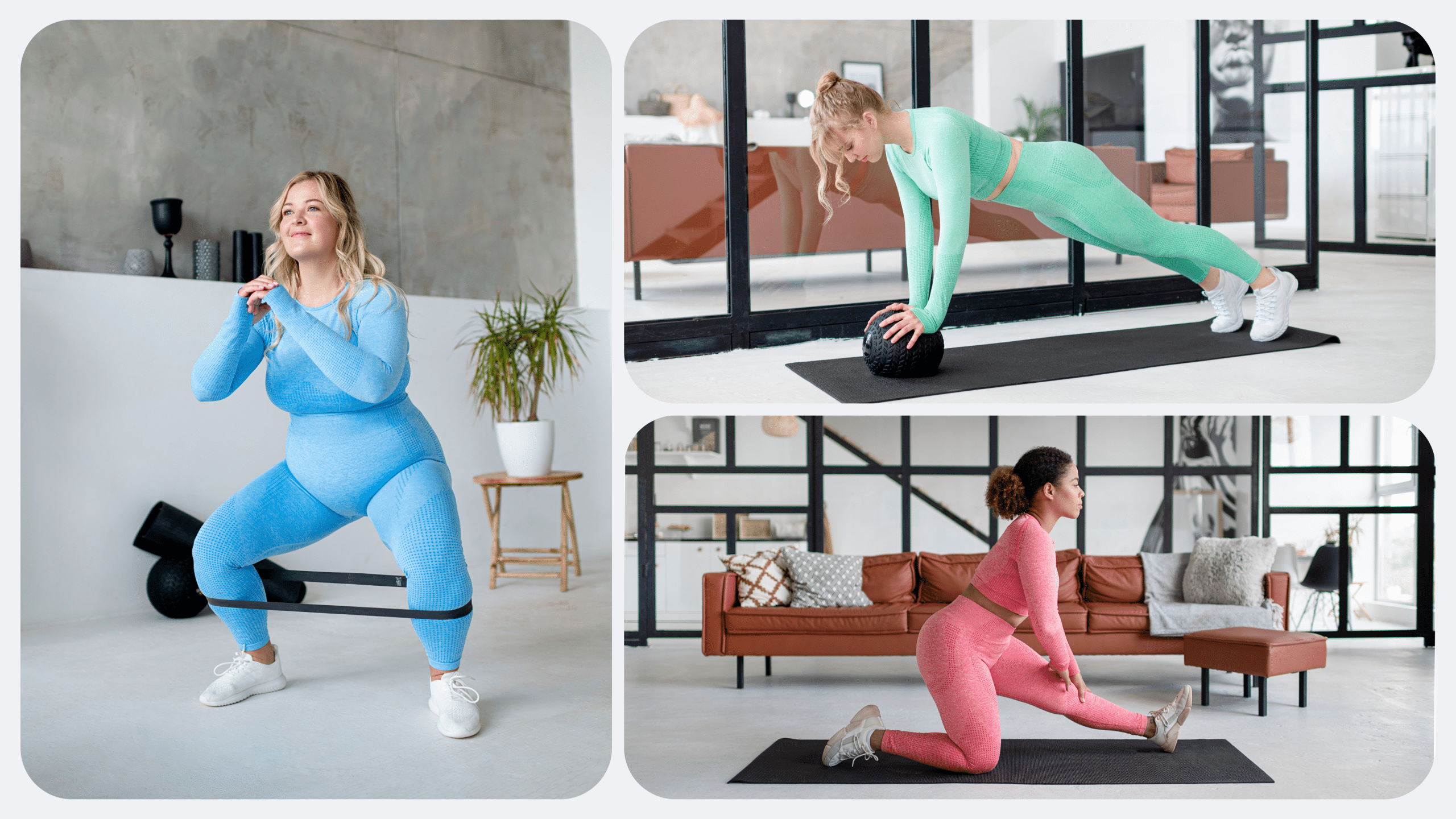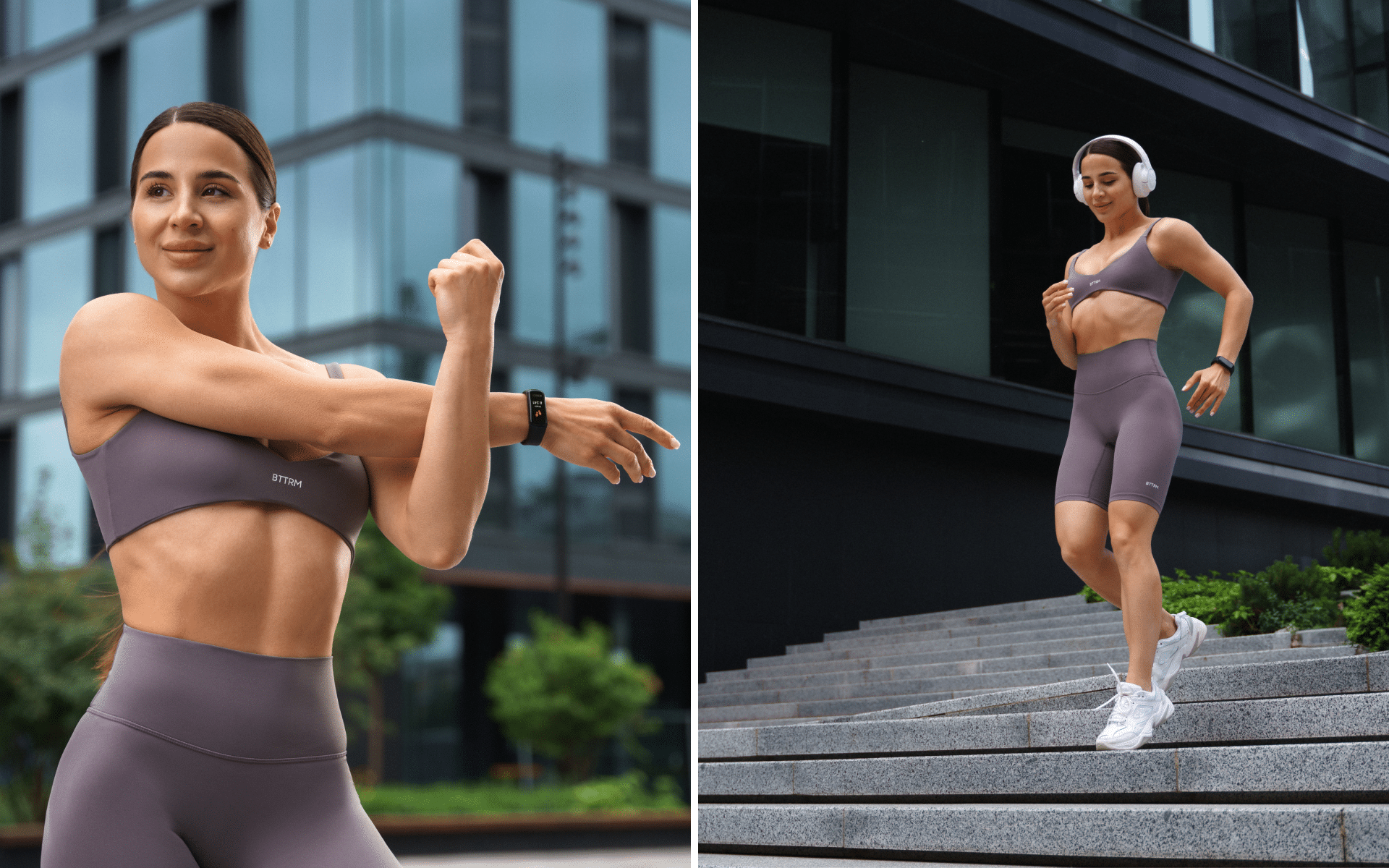Intensity. It is one of the terms you will encounter on all fitness platforms. It signifies how hard an athlete is performing relative to how hard they could perform. Of course every athlete wants to be the best at what they do. This means they are constantly looking for ways to boost their athletic performance with increased intensity. One of the proven ways of introducing resistance to a running program is by incorporating weights such as weight vest, ankle, or wrist weights. You may have included any one of these weights in your workout plan. But among most athletes weight vests have become a favorite staple. The key question is: what is the significance of running with a weight vest? Please read on to determine the benefits, risks, and safety considerations of running with a weighted vest.
Get your personalized
meal plan!
What Is A Weighted Vest?
When progressing in your fitness journey you may need to incorporate weights at some point. These weights help with increasing the exercise intensity to challenge your muscles further. There are different weights to consider, depending on your fitness level and exercise program.
Some of these include dumbbells, wrist weights, barbells, kettlebells, and a weighted vest. Athletes, in addition, most often use a weight vest to increase the intensity of their sprint or running workouts.
As the name suggests, a weighted vest refers to a vest with weights attached to it. The weights of the loads differs, so use comfortable ones that do not overly stress your muscles or increase injury risk. Besides having weights attached to it, the vest also has straps to hold it in place and pockets for the weights (5).
How Heavy Should My Weight Vest Be?
Evidence shows a high association between the weights you incorporate in your workout plan and the intensity of the regime. That said, the heavier the weights, the more intense your workout becomes.
In light of this, perhaps most people often choose to add heavier weights with the thought of reaping their desired results faster. Unfortunately though, this may be negative because using heavier weights that do not match your fitness capabilities increases your injury risk.
Fitness experts suggest using a weighted vest that does not weigh more than 10% of your body weight (5). The most commonly used weighted vests weigh from 4% to 10% of your body weight (5).
For example, if you weigh 180 pounds, your weighted vest should not exceed 18 pounds. Additionally, the least it should weigh is 7.2 pounds, 4% of 180 pounds.
Read More: Interval Running For Beginners: The Ultimate Guide
Is Running With A Weight Vest Hard?
Depending on who you ask, the answer to this question significantly changes. For example, if it is your first time running with a weight vest, you may find it challenging due to the extra intensity required. However, if you are used to exercising with it, you may find it manageable.
Of course, if you use an ill-fitting vest, you may find the challenge unnecessarily hard. The same applies if you run for an extended duration or far longer than you usually would. This means there are many factors that affect how you view running with a weight vest.
For best results, run for a short duration, preferably 30 to 40 minutes (5). Please talk to your trainer if you feel the need to use heavier weights or increase your running session timeline.
Is A Weight Vest Better Than Hand Weights?
As mentioned earlier, there are different types of weights that you can incorporate when running. They range from hand weights and ankle weights to weight vests. If you are considering adding weights to your running program, you may be confused about what loads to use.
The never-ending debate on the most effective load between hand weights and a weight vest may not make your decision easier. Is it good to run with hand weights or a weight vest?
Scientific studies show that both kinds of loads can help build strength. However, they suggest opting for a weight vest instead of ankle or hand weights. This is because ankle and hand weights only target your leg and arms muscles. (1).
This means that your other body muscles may not benefit as much. The weight of a vest is distributed more evenly, meaning it will target all your muscle groups. Similarly, it is much safer due to its reduced injury risk.
Is It Good To Run With A Weight Vest?
When running, wearing a weighted vest can be a great addition to your workout plan due to its long list of benefits. Here are some of the benefits of running with a weight vest:
Increased Resistance
Incorporating weights is one of the runner’s guides to developing strength and resistance. That is mainly because the heavy load makes your body muscles work more than they would without weights. As your muscles work harder, they strengthen through muscle fiber growth and more muscle fiber recruitment (1). And, of course, increased resistance means your body is working towards increased strength.
Cardiovascular Benefits
Running with a weighted vest has also been shown to have cardiovascular benefits. Because your muscles work harder due to the extra loads, your body demands more oxygen. This means your heart and lungs have to work harder to keep up with the oxygen demands.
As a result of the increased stress on your heart and lungs, your cardiovascular system undergoes adaptive changes to function better (2). Additionally, a 2022 study on the acute and longitudinal effects of weighted vests during sprint-running determined cardiovascular improvements (2).
The study discovered that training with a weighted vest improved blood lactate thresholds in athletes. This means that they can run at a fast pace and for an extended duration before experiencing fatigue.
BetterMe app will provide you with a host of fat-frying fitness routines that’ll scare the extra pounds away and turn your body into a masterpiece! Get your life moving in the right direction with BetterMe!
Increased Athletic Performance
A 2017 study revealed that running with a weight vest can boost athletic performance by enhancing the performance of explosive movements like the power clean (3).
Additionally, the weight vest has been shown to have improved an athlete’s coordination, movement efficiency, and balance. These are some of the elements that help enhance an athlete’s overall running gait and performance (4).
Increased Speed
Performing with a weighted vest or running with a plate carrier can also increase your speed. At first, the weights may make you lag due to the increased intensity. It is common and natural. However, your speed will increase over time as you continue to practice while wearing these vests.
Your advantage is that they help you reach your maximum speed potential even with the extra loads (4), (2). Additionally, the additional loads help you build up strength and stamina, boosting your running.
Improved Running Posture
Many athletes also train while wearing weight vests to help improve their running postures. However, remember that the extra load requires you to maintain your balance and gait to lessen injury risk (4). After practicing for an extended duration with the vest, you should report better running form and posture.
Weight Loss
Running while wearing a weight vest aids weight loss by intensifying your running program. Running without a weight vest is already challenging in itself. So, when you wear the vest, it enhances the calorie-burning effects of running, meaning you burn even more calories (3). If you burn more calories than you consume, you increase the rate at which you shed pounds.
If your goal is specifically weight loss, it would be best to implement other lifestyle strategies that promote weight loss. These include getting enough rest, drinking enough water, practicing portion control and mindful eating.
Do not forget to also work on your diet. After all, weight loss is 20% exercise and 80% diet. It would be best to talk to your dietitian to help you design a weight loss meal plan that accounts for all your dietary requirements.
Read More: Running In Place: Is It A Good Workout?
Who Should Wear A Weight Vest?
Owing to the long list of benefits, you may want to start running with a weight vest. However, this gear is not for everyone. Here is a class of individuals who are urged to not wear a weighted vest while running:
-
Individuals With Neck Or Back Problems
Running with a weight vest puts so much pressure on your back. This means that it might not be ideal if you have degenerative disc disease or spinal stenosis. In addition, excessive straining on your spine can result in problems running to your neck (5).
-
Individuals With Injuries Or Chronic Pain
The extra weight from the vest is not ideal for such people because it will strain their muscles, tendons, and joints. That may lead to more problems if you have existing injuries or chronic pain.
-
Pregnant Women
Pregnant women are also advised not to use weight vests when running without seeking consultation first. First, the compression on your belly may be very uncomfortable. Secondly, the extra intensity may be too strenuous and not ideal for you in your pregnancy. So, talk to a professional before incorporating weights into your workout plans during pregnancy.
How To Choose The Right Running Weighted Vest?
So what type of weight vest should I get? Fitness gurus suggest making your pick depending on your goals (5). If your goal is to build muscular endurance or boost cardiovascular health, opt for a lighter weight vest.
That said, if your fitness goal is to build explosive power, the best pick would be a medium weight vest. On the other hand, settle for a heavier vest if your goal is to build muscle. In addition, remember to pick a running weight vest that does not weigh more than 10% of your body weight (5).
Risks Of Running With A Weighted Vest
At first glance, running with a weight vest seems like an excellent strategy to enhance your athletic performance or build strength. But unfortunately, it is not risk-free. Some of the drawbacks associated with running while wearing a weight vest include:
-
Increased Injury Risk
Running with a weighted vest puts extra stress on your joints. Over time, this may lead to injuries. Additionally, a poorly fitted weight vest increases your risk of falling due to an altered balance (5).
-
A Change In Your Gait
Your running gait is defined as the cycle your leg travels through in one step when running. That cycle consists of two phases, which are the stance and swing. A regular running gait is determined by neutral or normal pronation. That is when your foot comes in complete contact with the ground and rolls inward about 15% to absorb shock (2), (5).
Unfortunately, when you run with a weighted vest, your gait changes. This contributes to excessive stress on your muscles, lower limb tendons, and bones. Over time this stress can contribute to many common running injuries (2).
-
Overtraining
Another potential risk of running with a weight vest is overtraining. Because of the exceptional benefits, you may be tempted to overtrain, perhaps with the thought that it will quicken the results. Unfortunately, that is not the working theory. Overtraining only makes you exhausted, and running with fatigued muscles increases your injury risk.
Betterme will keep you laser-focused on your weight loss journey! Nutrient-packed meal plans, fat-blasting workouts, galvanizing challenges and much more. Try using the app and see for yourself!
How To Minimize Injury Risk When Running With A Weight Vest?
To avoid or minimize all the listed risks above, some strategies have been implemented to help you when running with weight vests. Here are safety tips to consider when purchasing and using a weighted vest:
-
Learn How To Use It
Before incorporating the vest into your workouts, make sure you have practiced and learned how to use it. You need to know how to maintain your posture, form, and gait when wearing this vest (2). Practice how to use a weight vest before incorporating it into your running sessions.
-
Choose The Right Type
Weight vests come in different styles. There are tactical, shoulder holster, and torso covering weight vests. A tactical vest fits more or less like military body armor. They use steel plates with front and back slots of the vest.
Shoulder holster vests fit like a hydration pack except they also have a buckle at the front. As a result, the weight tends to be distributed on your upper back and along the straps. Torso covering vests, on the other hand, only cover your chest, using Velcro straps to fit the vest (2).
It would be best to seek the help of your trainer to determine the best style for you. Additionally, note that some weight vests are designed for specific body shapes. That said, when purchasing one, pay attention to your body type and comfort to decrease the pressure exerted on your chest area (5).
-
The Weight Source
It is worth noting that some weight vests come with weights sewn into them. Unfortunately, this means that you cannot adjust the weights as preferred. Others, and the most preferred ones, come with slots where you can easily add or remove your desired weights.
Similarly, other vests have plate-loaded resistance sold separately from the vests. It would be best to also talk to your trainer for better guidance and insight on the correct type of vest to purchase.
-
Comfort
Comfort is vital because it is one factor that affects your injury risk. For example, some vests have shoulder pads to prevent the edges of the straps from causing too much friction. Those without the pads result in excessive strain and friction, leading to inflammation, irregular movement and posture, and altered tissue alignment (5).
Additionally, choose a well-fitting vest. It is crucial, especially if you have to wear the vest for an extended duration.
-
Body Mechanics
Many factors come into play when you run with a weight vest. One is your posture. You have to make several postural adjustments to limit straining and reduce injury risk. Additionally, your body shape also influences the type and fit of your weight vest. Account for these factors when fitting or purchasing your vest.
How Long Should I Run With A Weighted Vest?
You may be tempted to train with the vest every other day, especially if you start seeing your desired results. This is not the right approach, per many fitness gurus. Daily training with weights increases your injury risk and gives your body muscles no room to repair or grow.
You are advised if running with such a vest, train with it one day and give your body a break the next day (5). Remember to set rest days so that your body has ample time to recover.
Additionally, most studies recommend not wearing a weighted vest for long durations. Remember that if you have increased the intensity of your workout, you need to shorten the session.
The Bottom Line
Running with a weight vest can be a good thing as it can help build athletic performance, speed, muscular endurance, and resistance. It also promotes weight loss and boosts cardiovascular benefits.
However, there is potential risk because an ill-fitting vest increases injury risk and causes straining and friction on your shoulders. Additionally, it can lead to overtraining and change your gait, ultimately affecting your running performance. Please talk to your trainer before adding these weights into your running program.
DISCLAIMER:
This article is intended for general informational purposes only and does not serve to address individual circumstances. It is not a substitute for professional advice or help and should not be relied on for making any kind of decision-making. Any action taken as a direct or indirect result of the information in this article is entirely at your own risk and is your sole responsibility.
BetterMe, its content staff, and its medical advisors accept no responsibility for inaccuracies, errors, misstatements, inconsistencies, or omissions and specifically disclaim any liability, loss or risk, personal, professional or otherwise, which may be incurred as a consequence, directly or indirectly, of the use and/or application of any content.
You should always seek the advice of your physician or other qualified health provider with any questions you may have regarding a medical condition or your specific situation. Never disregard professional medical advice or delay seeking it because of BetterMe content. If you suspect or think you may have a medical emergency, call your doctor.
SOURCES:
- Acute and longitudinal effects of weighted vest training on sprint-running performance: a systematic review (2022, pubmed.ncbi.nlm.nih.gov)
- Effect of weighted vest suit worn during daily activities on running speed, jumping power, and agility in young men (2012, pubmed.ncbi.nlm.nih.gov)
- Redistributing load using wearable resistance during power clean training improves athletic performance (2017, pubmed.ncbi.nlm.nih.gov)
- Warm-up with a weighted vest improves running performance via leg stiffness and running economy (2015, pubmed.ncbi.nlm.nih.gov)
- What to Know About Wearable Weights (2021, webmd.com)
